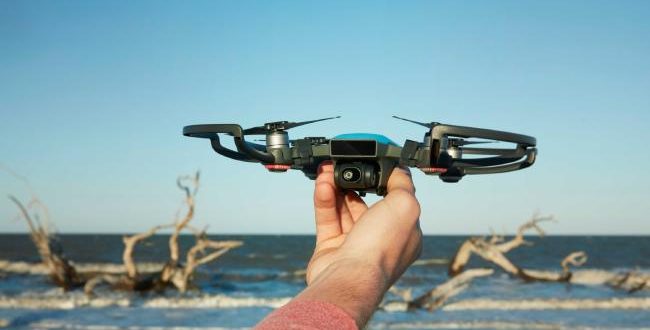Now there’s a drone you wave at to control. China’s DJI has announced it’s bringing its cheapie gesture-driven Spark consumer drone to Australia at a tempting price. Give it two taps and it lifts off from the palm of your hand. You can use gestures to get Spark to fly away, take a selfie, return to your hand, and end the flight.
Spark has other flight modes too. You can operate it using a smartphone or using a DJI controller which gives Spark a range of two kilometres. That’s further than Australian regulation allows which is line-of-sight flying.
The controller supports two sets of virtual reality glasses that you can give to friends so that they can enjoy the flight from the drone’s perspective while you pilot it.
And you can execute four automatic “QuickShot” flight modes. “Rocket” sends Spark up into the air and sets the camera so it can shoot downwards, “dronie” flies up and away from a subject, “Circle” circles it, while “Helix” gets the drone spiralling away as it flies upwards.
You can take video to capture these moments. DJI says video you take with QuickShot can be automatically edited into a 20 second clip you can share instantly on social media.
There’s also DJI’s TapFly where you can set a destination by tapping on a map, and Direction Mode where the drone flies in the direction you indicate on a mobile phone screen. Spark will automatically recognise and track an object that you choose. The drone can fly at up to 50 kph in sport mode.
Small and lightweight at 300 grams, Spark can fit in your luggage although it’s not foldable like the DJI Mavic.
The drone also offers object recognition and collision avoidance. Whether all these features work, we’re yet to see.
The surprise is the price. Instead of paying, say $2599 for a DJI Phantom 4 Pro, or $1699 for a foldable Mavic Pro, the DJI Spark will sell in Australia for $859, or $1199 with a combo pack. The pack includes four pairs of spare propellers, two extra batteries, a charging hub and remote controller. DJI hopes the lower price will make the Spark attractive to consumers generally.
DJI senior communications manager Michael Oldenburg said two main compromises were made to make the drone more affordable. Instead of a 3-axes gimbal and 4K video quality, Spark has a two-axes gimbal and shoots 1080p, 30 frame per second video. The camera has a 1 /2.3-inch CMOS sensor and shoots 12 megapixel stills.
The other compromise is battery life. Spark has a 16-minute flight time, not 21 minutes as with Mavic. When flying with the remote controller, DJI says Spark can transmit 720p video from up to 2km away.
Spark brings with it two new shooting modes: Pano shoots vertical and horizontal panoramas while ShallowFocus lets you shoot with a subject in focus and the background blurred.
Spark can be pre-ordered now and will be available in Australia mid June.
Reader comments on this site are moderated before publication to promote lively and civil debate. We encourage your comments but submitting one does not guarantee publication. We publish hundreds of comments daily, and if a comment is rejected it is likely because it does not meet with our comment guidelines, which you can read here. No correspondence will be entered into if a comment is declined.





